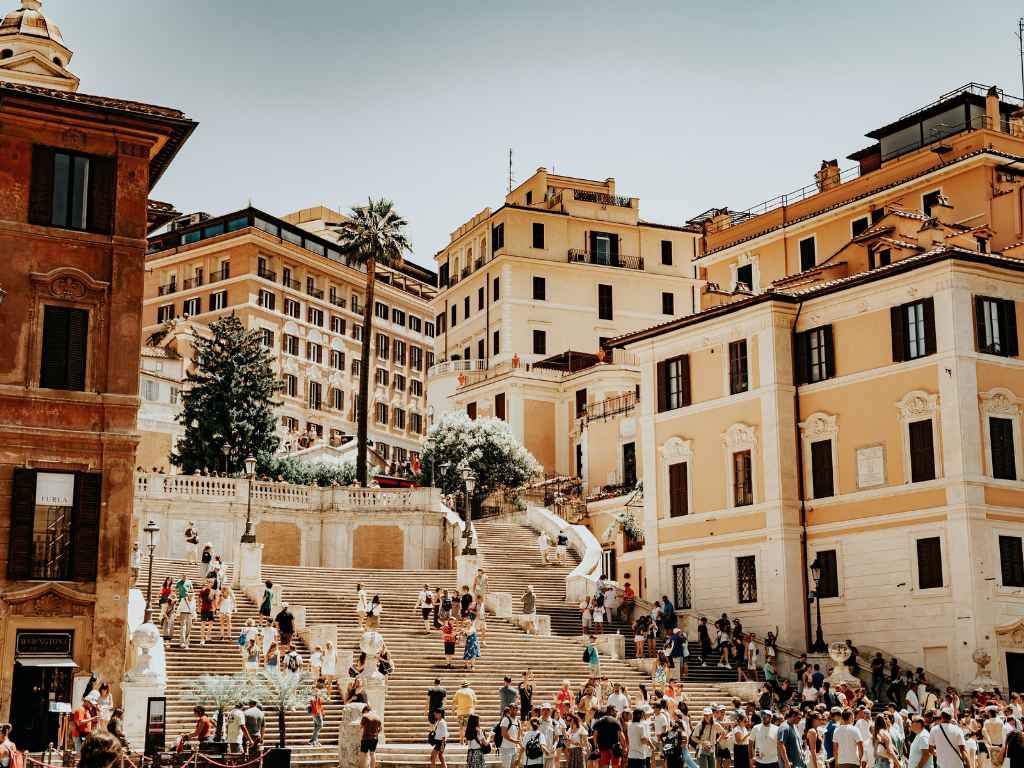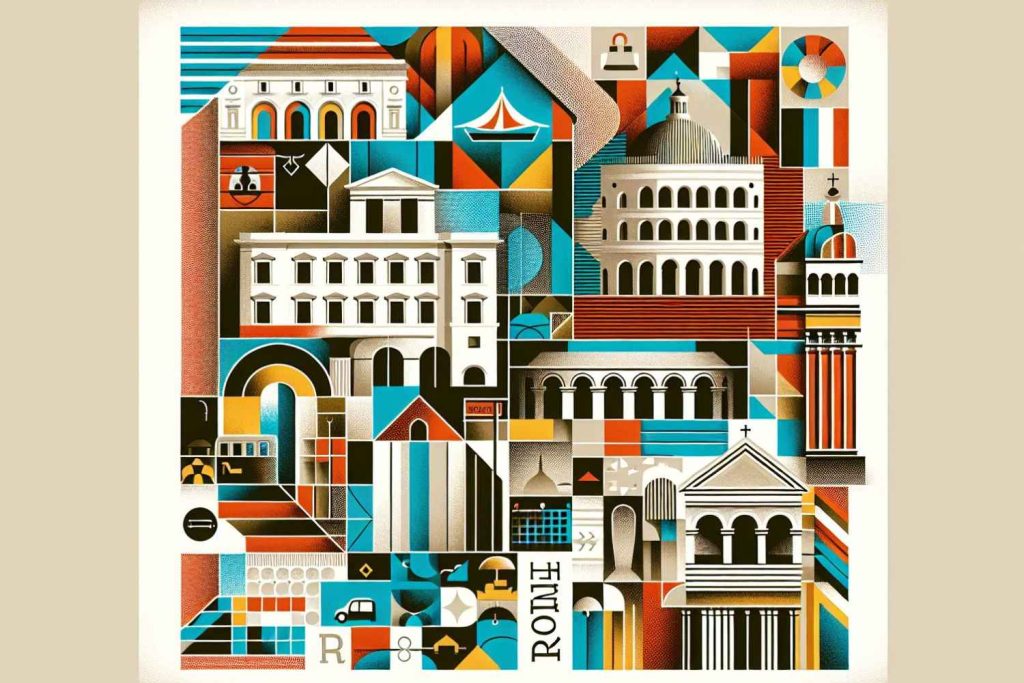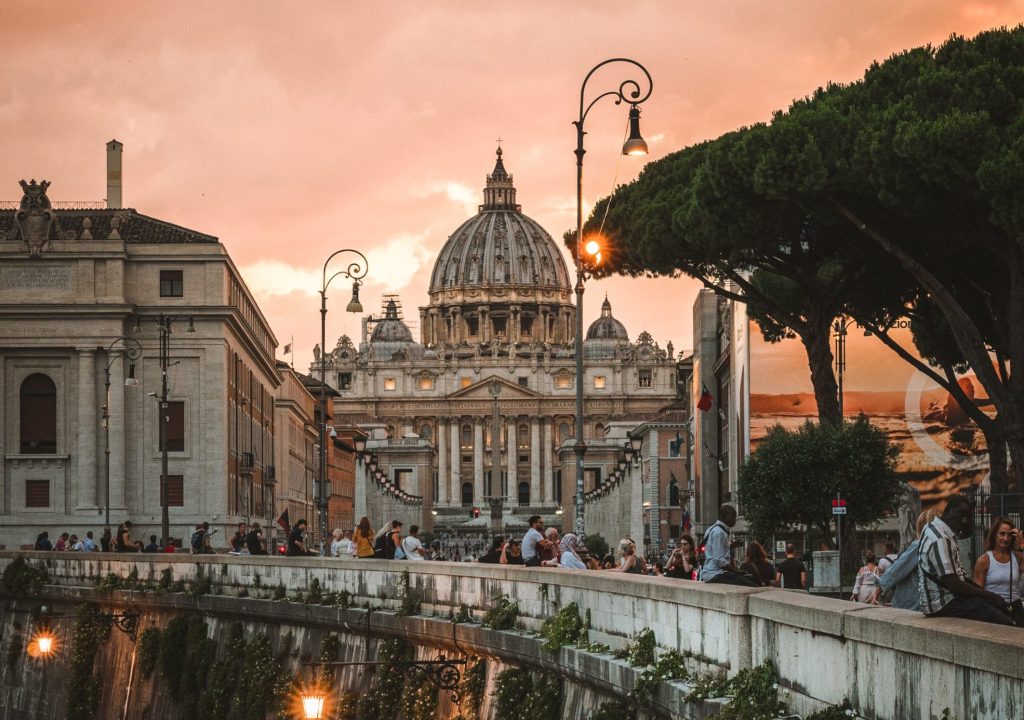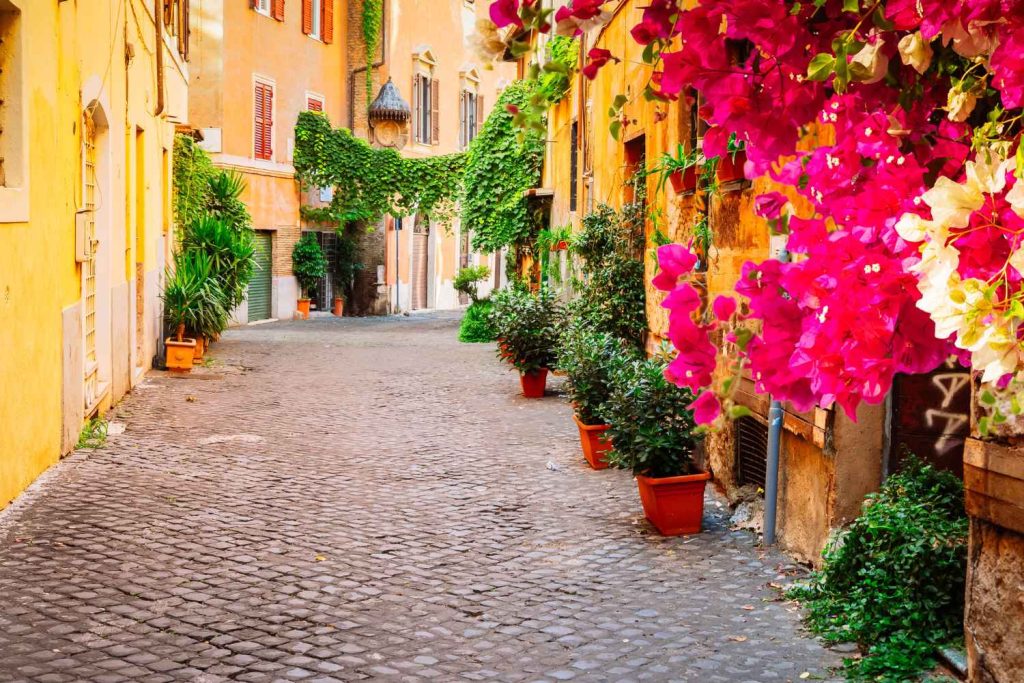Amidst the ancient ruins and Renaissance masterpieces, stands a remarkable monument that has captured the hearts of travelers for centuries – the Spanish Steps in Rome.
As you embark on a journey through the historic streets of the Eternal City, you’ll soon find yourself ascending these iconic steps, each one whispering tales of history, art, and romance. We will take you on a virtual tour of the Spanish Steps in Rome, uncovering the secrets and treasures that make this place an essential stop on any Roman adventure.
A Historical Legacy
The Spanish Steps in Rome, locally known as “Scalinata di Trinità dei Monti,” were built between 1723 and 1725 to connect the Trinità dei Monti church at the top with the Piazza di Spagna below. Commissioned by French diplomat Étienne Gueffier, these 135 steps were designed by the talented architect Francesco de Sanctis, resulting in a stunning display of Baroque artistry. The name “Spanish Steps” is derived from the neighbouring Spanish Embassy, which has been a prominent presence in the area since the 17th century.
As you ascend the steps, you’ll be awed by the grandeur of the design, with the delicate pink and cream hues of the travertine stone contrasting against the lush greenery that lines the stairway. The combination of art, history, and natural beauty creates an enchanting atmosphere that has drawn visitors from around the world for generations.
Architectural Marvels – Baroque Splendor
The Spanish Steps are a masterpiece of Baroque architecture, renowned for their sweeping elegance and stunning design. The focal point of the stairway is the Fontana della Barcaccia, a boat-shaped fountain created by Pietro Bernini, father of the famous Gian Lorenzo Bernini. The soothing sound of water cascading from this fountain provides a delightful backdrop to the vibrant atmosphere of the steps.
As you climb the steps, you’ll notice that each of the twelve terraces is adorned with a variety of elements, including elegant balustrades, intricate floral patterns, and occasional sculptures. The design evokes a sense of harmony and grandeur, making the Spanish Steps a perfect place for both quiet contemplation and lively socialising.
A Cultural Hub – Art and Inspiration
The Spanish Steps have long been a magnet for artists, writers, and musicians seeking inspiration from their enchanting surroundings. The famous English Romantic poet John Keats lived and died in a house near the steps, which is now a museum dedicated to his life and works. It was in this very neighbourhood that he wrote some of his most celebrated poems, inspired by the beauty and mystique of Rome.
Walking along the steps, you’ll often find local artists displaying their works, adding a touch of creativity to this already vibrant place. The Spanish Steps are a living testament to the enduring artistic spirit that has flourished in Rome for centuries.
Shopping Extravaganza – Luxury at Your Feet
At the foot of the Spanish Steps lies the illustrious shopping street, Via dei Condotti. This charming cobblestone street is home to some of the most prestigious Italian fashion houses and boutiques, including Gucci, Prada, and Bulgari. If you’re a fashion enthusiast, this is your paradise.
Even if shopping isn’t your primary interest, a leisurely stroll along Via dei Condotti is a must. The street is lined with elegant cafes, where you can sip on a cappuccino or indulge in delicious gelato while people-watching. It’s the perfect spot for immersing yourself in the chic Roman lifestyle.
A Seasonal Spectacle – The Spanish Steps and the Art of Flower Arrangement
One of the most magical times to visit the Spanish Steps is in the spring when the annual “Scalinata di Trinità dei Monti in Fiore” event takes place. During this time, the steps are adorned with thousands of vibrant azalea flowers, transforming the stairway into a breathtaking cascade of colour and fragrance.
This tradition dates back to the 1950s and is a true spectacle that attracts visitors from all over the world. It’s a testament to the Roman love for beauty and aesthetics, and it’s a sight you won’t want to miss if you have the opportunity to visit in the spring.
Sunset Serenades – Romance on the Steps
The Spanish Steps have long been synonymous with romance, and it’s not hard to see why. As the sun sets over Rome, casting a warm, golden glow on the city, the steps become a natural amphitheatre for street musicians and artists. The atmosphere is positively enchanting.
Couples often gather here to enjoy the serenades, share a kiss, or simply bask in the romantic ambiance. It’s the perfect place for a leisurely evening stroll hand in hand, creating memories that will last a lifetime.
Practical Tips for Visitors – Making the Most of Your Visit
Visiting the Spanish Steps in Rome is an incredible experience, but to make the most of your trip, it’s essential to plan wisely and be prepared. Here are some practical tips to ensure your visit is smooth and enjoyable:
Choose the Right Time: The Spanish Steps can get quite crowded during peak tourist season, especially mid-morning and early afternoon. To avoid the crowds and have a more peaceful experience, consider visiting early in the morning or later in the evening. Sunrise and sunset are particularly magical times to explore this iconic site.
Stay Hydrated: Rome can get hot, especially during the summer months. Make sure to carry a refillable water bottle with you to stay hydrated as you climb the steps and explore the area. There are public drinking fountains (known as “nasoni”) throughout the city, so you can easily refill your bottle.
Respect the Environment: The Spanish Steps are not only a historical and cultural treasure but also a natural gathering place for both locals and tourists. To help preserve this iconic location for future generations, please be respectful of the environment. Avoid littering, and dispose of your trash properly in designated bins. Remember that defacing or vandalising historical structures is both illegal and disrespectful.
Dress Code: If you plan to enter the Trinità dei Monti church at the top of the steps, be mindful of the dress code. Generally, it’s advisable to wear clothing that covers your shoulders and knees when visiting religious sites in Italy. Carrying a shawl or a light jacket can come in handy to cover up if needed.
Comfortable Shoes: The Spanish Steps consist of 135 steps, and while the climb is not overly strenuous, wearing comfortable walking shoes is recommended. You’ll be doing a fair amount of walking in Rome, so having footwear that supports your feet will make your overall experience more enjoyable.
Keep an Eye on Your Belongings: Just like in any other bustling tourist destination, it’s crucial to be vigilant about your belongings. Petty theft can happen in crowded places, so keep an eye on your bags, wallets, and personal items. Consider using a crossbody bag or a money belt for added security.
Cash vs. Cards: While many places in Rome, including restaurants and shops, accept credit and debit cards, it’s a good idea to carry some cash with you, especially for small purchases or when visiting more local establishments. Make sure to notify your bank about your travel plans to avoid any issues with card transactions.
Learn Basic Italian Phrases: While you’ll find that many people in Rome speak English, making an effort to learn a few basic Italian phrases can go a long way in enhancing your experience and connecting with the locals. Simple greetings like “Buongiorno” (good morning) and “Grazie” (thank you) are always appreciated.
Plan Ahead: If you’re travelling during peak tourist season or want to explore specific attractions near the Spanish Steps, consider booking tickets or tours in advance. This can save you valuable time waiting in lines and help you make the most of your visit.
Photography Gear: Don’t forget to bring your camera or smartphone to capture the stunning views and architectural details. Rome is incredibly photogenic, and you’ll want to document your visit to share with friends and family.
The Spanish Steps in Rome are more than just a staircase; they are a symbol of timeless beauty, art, and culture. As you explore this magnificent monument, you’ll be transported to a world where history meets modernity, and where every step is a journey through the heart of Rome’s rich heritage.
So, whether you’re seeking romance, inspiration, or simply a taste of Italian elegance, the Spanish Steps will undoubtedly leave an indelible mark on your heart, just as they have for generations of travellers before you. Come, climb these storied steps, and discover the enchanting allure of the Spanish Steps in Rome for yourself. It’s a journey you won’t soon forget.
If you’ve now decided that you want to visit the Spanish Steps in Rome, we recommend you check The Inn at the Spanish Steps for your accommodation. Additionally, we suggest checking out the Guided Walking Tour of Rome Highlights, which covers Spanish Steps, Pantheon, and Trevi Fountain.
Not a fan of Inn? Check this list of hotels near Spanish Steps by Hotels.com (hotels.com/de1737636/hotels-near-spanish-steps-rome-italy)
More articles you might like...
You can find more great Rome content in the following categories;
All about Vatican City Commonly Asked Rome Questions Rome Accommodation Rome Food and Drink Rome History and Culture Rome Neighbourhoods Rome Tours and Must-See Attractions Rome's Top Tours





